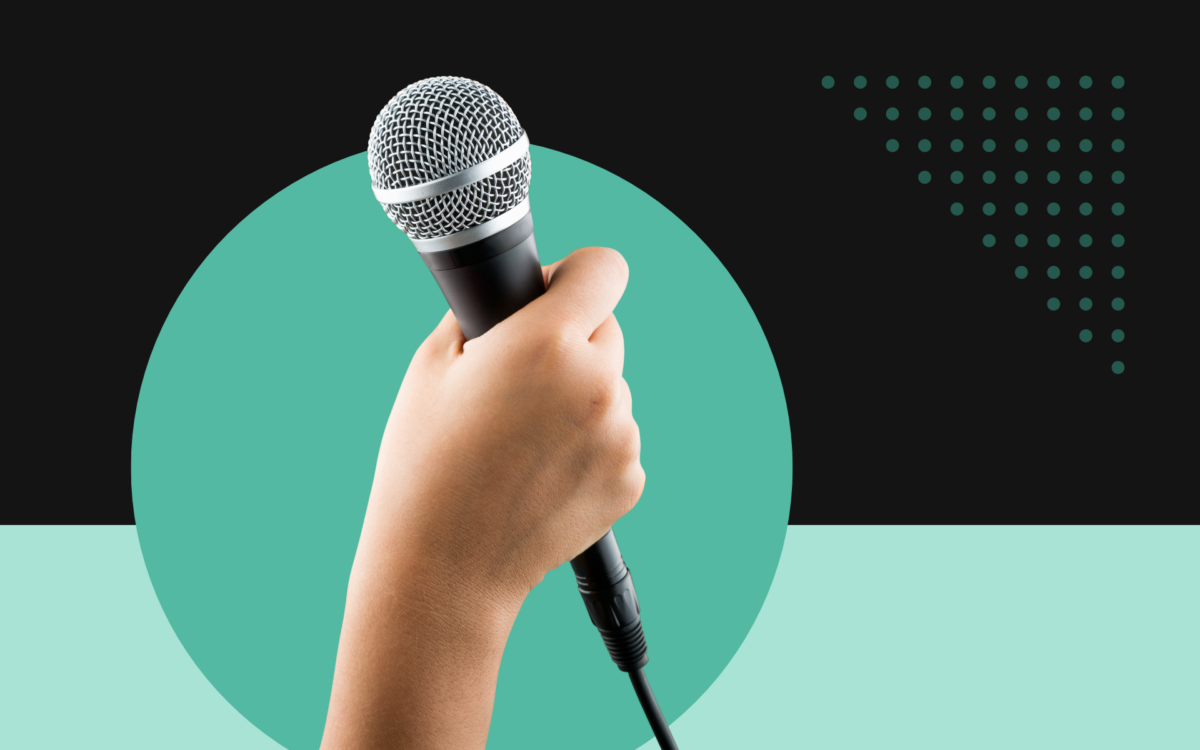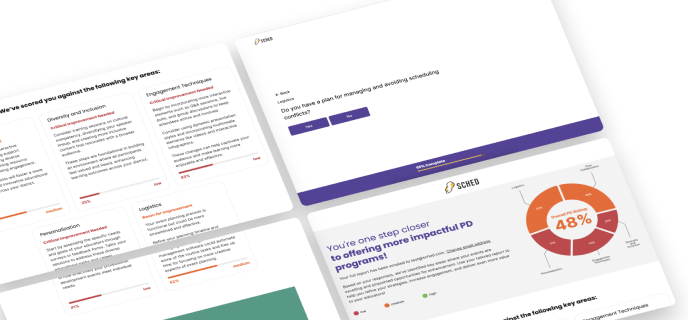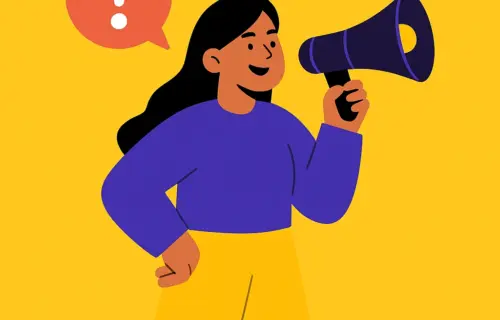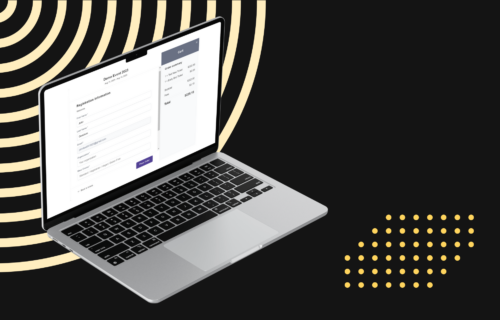Hosting a Q&A? Question and answer sessions can be powerful tools that help build understanding and unite people. They can also enhance brands, spark creativity, and improve collaboration and morale.
Of course, conducting a successful Q&A session requires understanding best practices.
In this post, we’ll walk you through what you need to know to maximize the value of your sessions.
TL;DR
Table of contents
- 1 TL;DR
- 2 What is a Q&A session?
- 3 5 benefits of hosting a question and answer session
- 4 How to prepare for a successful live Q&A? 9 tips for before your Q&A meeting
- 5 Best practices to effectively moderate your questions and answers session
- 5.1 Be personable
- 5.2 Make eye contact
- 5.3 Use a moderator
- 5.4 Instruct the audience
- 5.5 Keep speakers on track
- 5.6 Restate the question
- 5.7 Pause and breathe
- 5.8 Ask clarifying questions
- 5.9 Plan availability for after the event
- 5.10 Ask for more questions or time your transition
- 5.11 Stick to your Q&A time
- 5.12 Skip the debate
- 6 The takeaways
- Q&A sessions enhance understanding, unite people, boost brands, spark creativity, and improve collaboration and morale.
- Practice sessions, promote the event, clarify rules, predict questions, and prepare answers to ensure a smooth Q&A.
- Use a moderator, make eye contact, restate questions for clarity, handle criticism gracefully, and stick to the time limit.
What is a Q&A session?
What is a Q&A? If you’re unsure of the Q&A session’s meaning, it’s relatively simple. Question and answer sessions are pretty much what they sound like: an opportunity for an audience to ask questions of a specific speaker.
Often, Q&A sessions involve subject matter experts and can be found at conferences, trade shows, and other corporate events.
However, you can also use them in different contexts to inform employees, within R&D, and more. Reddit’s famous AMAs (ask-me-anything) are great examples of Q&As.
5 benefits of hosting a question and answer session
Why should you bother organizing a Q&A session? A question and answer session can offer some compelling benefits. Here are some of the most important.
1. Provide access to the leadership team
Q&A sessions are excellent ways to provide access to your leadership team. These might be for employees or others, such as journalists or industry leaders. They ensure that audience members can ask questions directly of leaders and hear the answers in their own words.
2. Provide insights
Question and answer sessions are primarily about the exchange of information. Well-structured questions can illuminate important topics, build understanding, and more.
3. Clarify misconceptions
From business processes to the impact of materials on the environment, question and answer sessions allow you to clarify misconceptions and set the record straight. That can have additional benefits, including improving audience perception.
4. Build your brand
At its heart, a Q&A session is about allowing an expert to answer questions from real people. Those answers can illustrate the difference between your brand and a competitor, highlight essential steps you’re taking toward environmental protection, and more to build your brand.
5. Gauge participant understanding and interest
How much does your audience understand your products or services? How much interest is there in your upcoming offering? Q&A sessions make an excellent venue for exploring these topics. You can then use that information to chart a path forward with confidence.
As you can see, question and answer sessions offer several benefits. The challenge is pulling one off successfully.
How to prepare for a successful live Q&A? 9 tips for before your Q&A meeting
Whether you’re hosting an internal or external event, you’ll need to know how to keep your Q&A session on task, prevent it from running over, and deliver the best experience to attendees and speakers.
1. Practice makes perfect
You can’t expect your Q&A session to go smoothly if you don’t run through it a time or two beforehand. Practice makes perfect. Run through the session a few times so that guests understand their order of appearance and everyone is prepared. This also allows you to test all your equipment and hone any prepared materials.
2. Get the word out
Whether your event is internal or will involve people outside the organization, you need to get the word out. Q&A sessions benefit from a promotion like any other initiative; the more people who know about it, the better.
Tailor your promotional efforts to the event and your intended audience. If you’re involving employees, an email might be all you need. If you’re affecting people outside the organization, you might need to use social media, email, and other channels.
3. Clarify the rules
A successful Q&A session flows smoothly from start to finish. For that to happen, you’ll need some ground rules. This should include how audience members can submit questions and the amount of time allotted for speakers to answer those questions.
4. Plan your Q&A time
Q&A sessions can be held as standalone events or tacked onto the end of another event, like a webinar. Tailor your session’s time to your specific format and the anticipated level of interest in what your speakers have to say.
Let your audience know the time limit and alert them when it’s about to end. Above all, respect everyone’s time and avoid letting the session run over.
5. Brief your audience
Not only do you need to promote your Q&A session, but you also need to brief your audience on what to expect.
Will you take questions live? Will you collect them beforehand? Will you be using a live moderator or moderating software?
Set clear expectations and ensure that your audience members know how to participate.
6. Predict questions and prepare
While you cannot anticipate every question the audience might ask, you can predict many. Plan for these and prepare accurate, engaging answers that give the audience the necessary information while building your brand.
7. Plan for a lack of questions
Sometimes, the flow of questions can slow to a stop. That can affect the entire session, so you must have some questions prepared beforehand. The moderator can intervene with these during lulls and keep the momentum going.
8. Handle criticism with grace
Hopefully, your question and answer session will go smoothly. However, there’s always a chance that speakers will face some criticism. This is okay and to be expected.
Criticism is a chance to respond gracefully and respectfully while clarifying and providing more information. If you cannot answer during the event, commit to following up later (and then make sure to do so).
9. Prepare relevant takeaway materials
Usually, question and answer sessions are planned around things. It could be a new product or service launch. It might be a new benefits package for the employees.
Whatever it is, you won’t be able to cover everything during the session, so prepare takeaway materials for attendees afterward that highlight what they need to know.
With some planning and preparation, your Q&A session will be a success. However, you’ll want to ensure you can moderate it as it evolves, which requires understanding a few best practices.
Best practices to effectively moderate your questions and answers session
Q&A session moderation is an integral part of any successful event. And while it’s not rocket science, it does present some interesting challenges. The best practices below will help you deliver an excellent session for speakers and attendees.
Be personable
The goal of a Q&A session is to answer questions. However, if the speaker isn’t approachable, most people won’t bother to ask questions. Ensure the speaker understands the need to be friendly, open, and welcoming. This will encourage the most questions and help ensure a successful event.
Make eye contact
If you’re accepting live questions, have the moderator make eye contact with the questioner. This shows that you’re actively engaged, see and hear them, and value their question. It’s also more engaging and shows other audience members that you’re interested in the discussion.
Use a moderator
While speaker-moderated sessions can work, it’s often better to involve a standalone moderator. They can introduce speakers and topics, help prioritize questions, ask the speakers questions if the audience is lagging, and more.
Instruct the audience
Before and during the Q&A session, encourage your attendees to keep their questions clear, brief, and concise. Rambling, unclear questions may save time and prevent others from asking them.
Keep speakers on track
It’s somewhat natural for speakers to expand too much on an answer. They want to provide sufficient detail and may need to explain unfamiliar concepts. As with audience members, encourage speakers to keep their responses concise and relevant. This helps ensure that there’s enough time for everyone to ask questions.
Restate the question
Because question and answer sessions are live and time is limited, it’s essential to ensure clarity and understanding. Restate the person’s question to ensure that everyone is clear on what’s being asked and to show that you’re actively listening.
Restating the question allows the asker to clarify the information they’re seeking and helps prevent misunderstandings and wasted time.
Pause and breathe
It might feel natural to jump right into an answer if it’s something that the speaker knows well. However, pause and take a breath or two before answering.
This allows the speaker to gather their thoughts and respond more coherently. It can also help them respond to the intent behind the question rather than the actual words used while simultaneously making it easier to formulate clarifying questions.
Ask clarifying questions
To further ensure clarity and understanding, feel free to ask follow-up questions of the person. This can provide them with the opportunity to expand, refine, or clarify while providing additional details.
It can also help ensure that the audience understands what’s being asked and provide the speaker with the best opportunity to respond accurately.
Plan availability for after the event
In a perfect world, everyone would be comfortable asking their questions in front of others. We don’t live in that world.
Some questions might be too sensitive for a group setting, and other questioners might be too shy to speak up during the session. Leave some time after the event for these questions.
Ask for more questions or time your transition
Once the question has been answered, ask if the person has more questions, assuming you have plenty of time. If not, move on to the next person by asking for additional questions.
Sometimes, you may use the end of the question as a transition period into the next phase of your presentation.
Stick to your Q&A time
You should set a timeframe for your Q&A session during your initial planning. Make sure you stick to it as closely as possible. Remind your audience of the remaining time periodically so that they can have their questions ready. Sometimes, attendees may not have the opportunity to ask a question. Provide a way for them to submit it after the event.
Skip the debate
Sometimes, audience members want to debate the answer to a question. This is particularly true with controversial topics, but it’s familiar with many subjects and is usually tied to heightened emotion in the asker.
For instance, a change in employee benefits could spark the desire to debate. Both speakers and the moderator should avoid being drawn into a debate, as they can waste too much time. If necessary, provide a time for additional dialog after the Q&A session concludes.
The takeaways
- Q&A sessions provide access to leadership, offer insights, clarify misconceptions, build brand credibility, and gauge participant understanding and interest, enhancing overall engagement and brand perception.
- Conduct practice sessions, promote the event, set clear rules, predict potential questions, and prepare answers to ensure smooth execution. This helps manage expectations and prepares all participants.
- Use a moderator to facilitate the session, maintain eye contact, restate questions for clarity, handle criticism gracefully, and stick to time limits to ensure a structured and respectful dialogue.
- Plan availability for private questions after the event, provide means for submitting questions not addressed during the session, and avoid debates to keep the session productive and on track.









